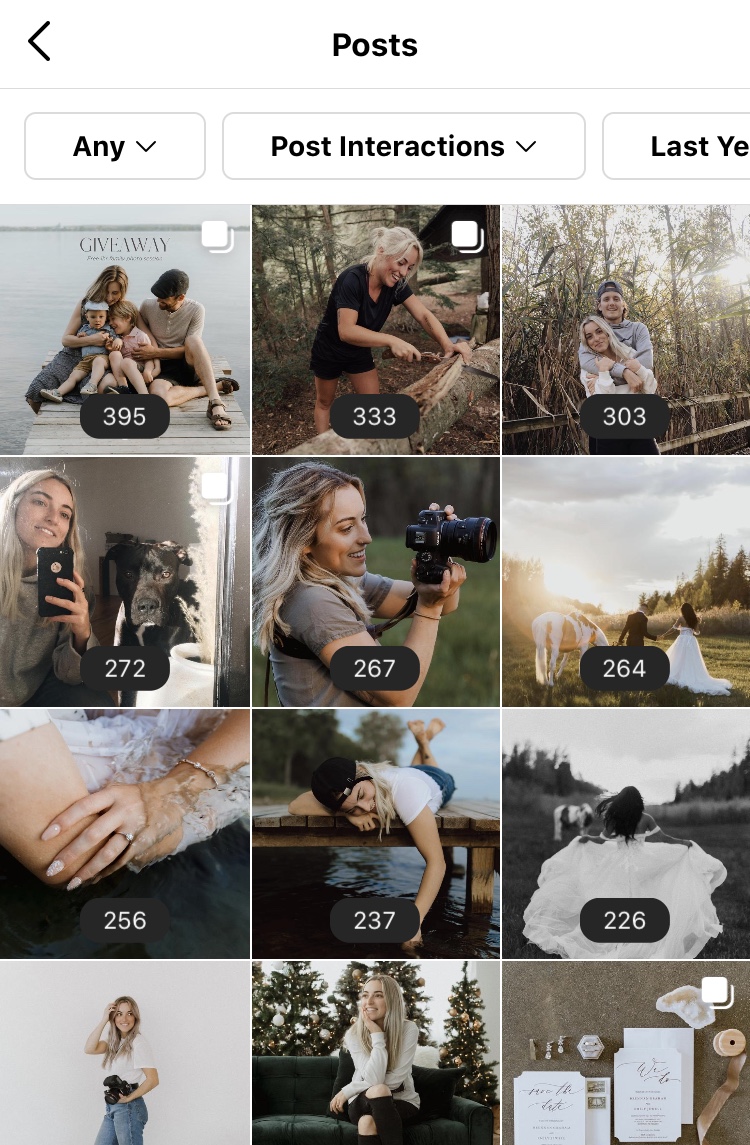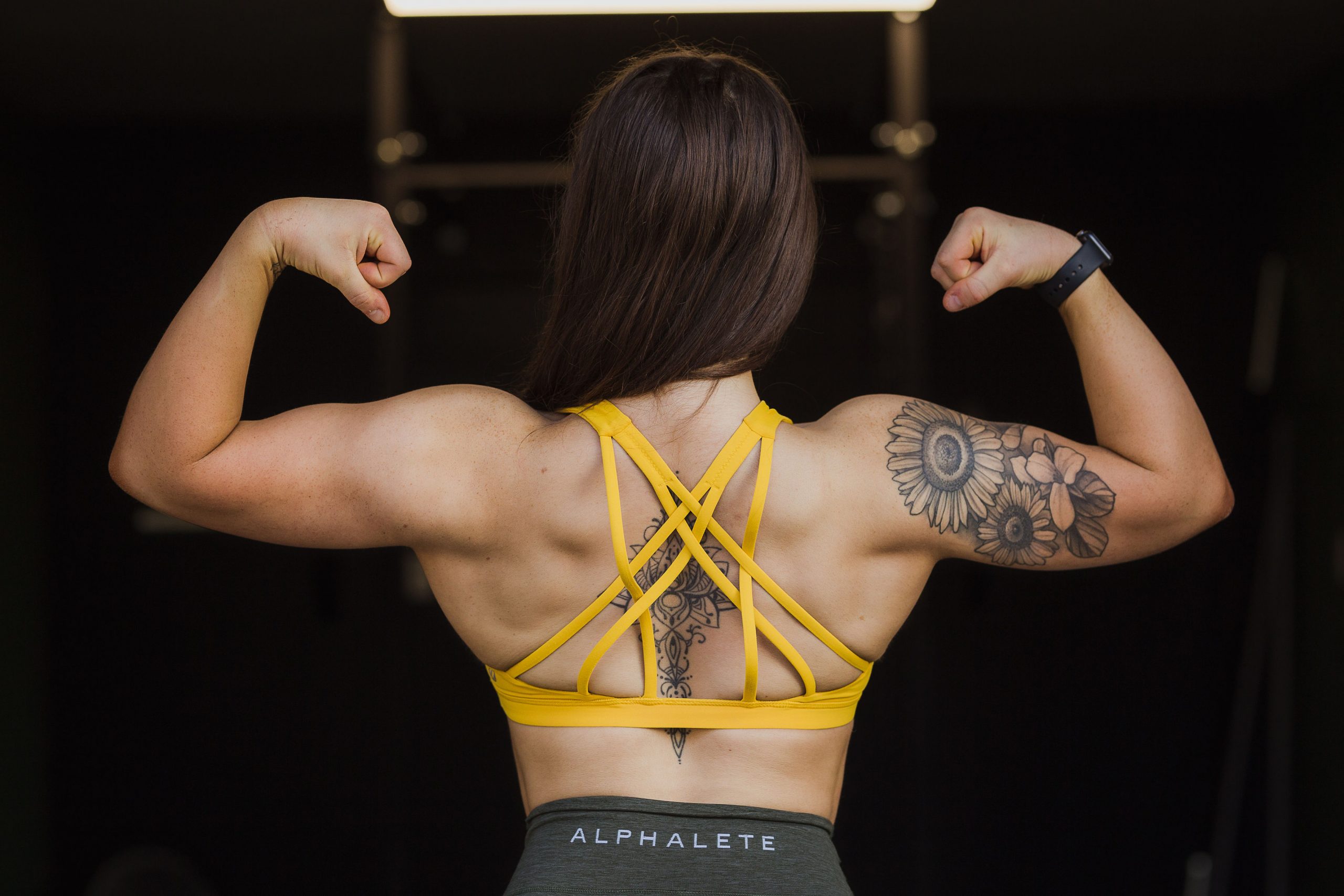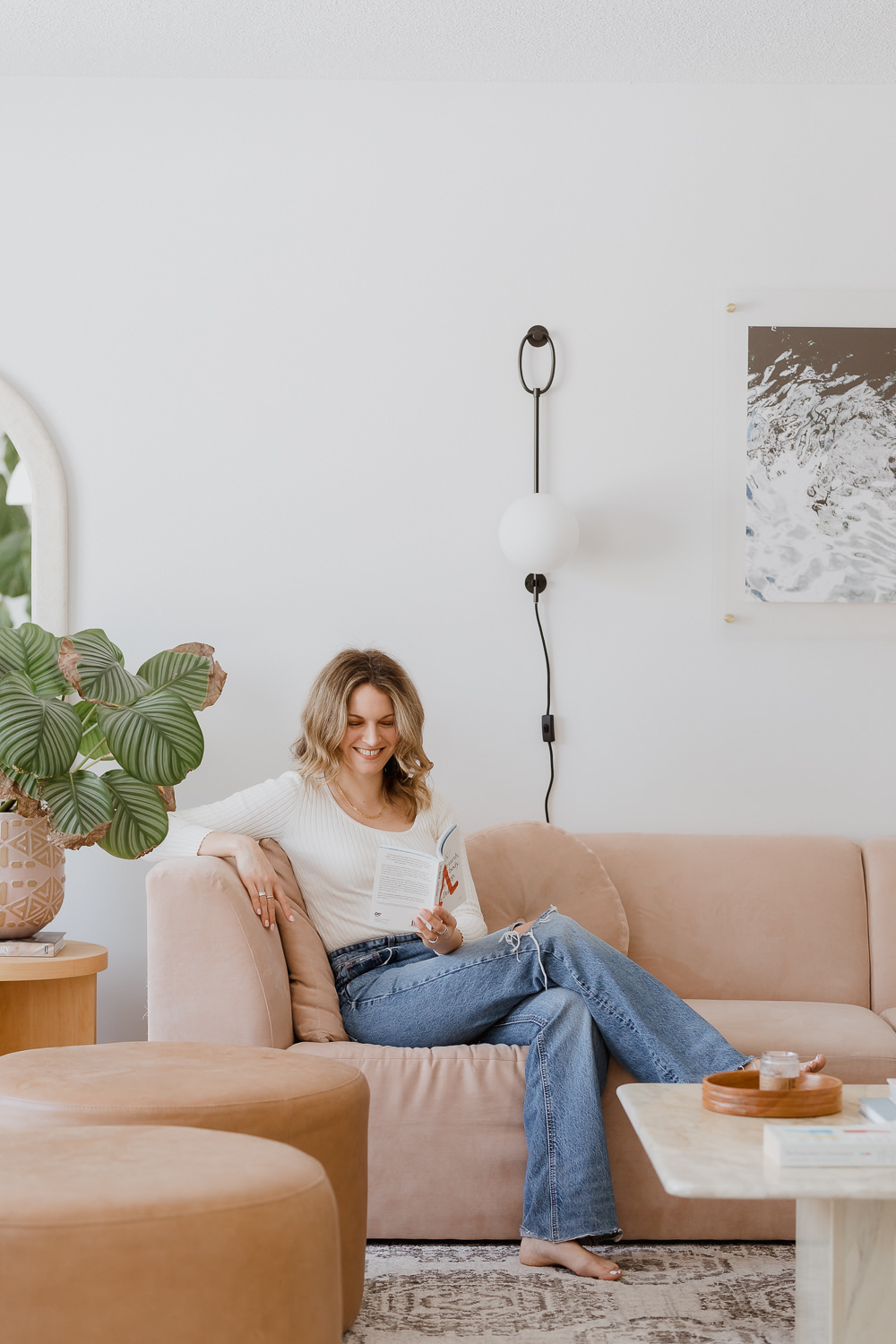5 Places to Use Your Small Business Brand Photos
You have a gallery full of branding photos and now you’re unsure how to make the most of that big investment, right? Use this blog post to double check that you’re plastering your brand photos everywhere you possibly can so you can put them to good use. Let’s start with the obvious ones and then get a little more specific. First up, your website:

1. Your website
This is a no-brainer, so let’s go into the specific locations on your site you can use them to help you plan your shots list going into your brand shoot.
Anywhere you’re introducing yourself should have a portrait next to it. Most importantly, your home page should introduce you as the business owner and what you do right away — especially if you’re a service-based business. People trust people more than they trust companies, so use that to your advantage as a small business.

Your about page, of course. Similar to the introduction on your home page, but this should be a longer version that speaks to how you serve your clients. Use a portrait of you here that shows both your personality and your brand to help your potential clients get to know you quickly. And save this introduction copy while you’re at it, because you’re going to be introducing yourself over and over, so having one copy that you love stored in one place will save you from rewriting the script, literally.
Use various photos of you doing your craft throughout your website anywhere that could use extra visual interest. Detail photos are up-close shots of any small detail, for ex. your paintbrushes in a jar, your ceramics all stacked in a pile, or your pen behind your ear. I find these types of photos especially awesome for these placements on your website, so make sure your photographer gets these photos as well.

2. Socials
Introduce yourself. Talk about why you do what you do or the story of how you became interested in it. People soak this stuff up and having your face in the photo you post noticeably boosts engagement.
Get photos in different outfits so it’s less noticeable that you’re using multiple shots from the same shoot — and then use multiple shots from the shoot! Don’t just post one and move on, there should be enough variety in your final gallery to use lots of shots over the course of at least a few months.

Most of your audience won’t see eerything you post anyways. Ex. on Instagram, your post only gets shown to 3% of your followers and will only be shown to more if the post gets great engagement with that first 3%. So show that face — get that engagement.


3. Stationery & guides
This could include brochures, guides, business cards, or other paper materials. Anything that could be seen by new potential clients, you want to include a short intro to who you are — and this includes a good headshot of yourself that encapsulates your personality and brand.
Specifically for business cards, your introduction is most often point form, with your name, title, business name, and contact information. But if you’re a creative business, why not show off your creativity here and change things up?

Brochures and guides are a little longer in nature, so take half a page or a full page to introduce who you are and what you do. Pull out that copy you saved from before and plug it in here. Have a strong headline that says what you do, where you do it (if that’s important), and who you serve. Then complete the intro with a paragraph that expands on that and shows the client why they absolutely need to work with you.

4. Email signature / email marketing
You may feel nervous about putting your face everywhere, but let me assure you that people LOVE seeing your face! They love hearing the story behind your work and seeing artful images that display that succinctly.
Your email signature can include a headshot next to your contact information and your email marketing can include detail photos, product photos, and portraits.


When you are announcing big news in your email marketing, include a photo with a big expression to catch eyeballs. You can create gifs out of a couple brand photos and include these in your emails to show your personality in a creative way. YouTube has tutorials for the Photoshop savvy business owner and if you’re not — Google “gif maker” and you’ll get tons of results on how to do this simply.
5. Online shop
If your business sells a physical product, bring a few of those products to your shoot and use those photos on your shop. If you sell a service, think of a photo that would represent that service and get a photo like that at your shoot for use when promoting it.
A couple examples: you’re a home designer. You don’t have a physical product to get photos of, but you probably do have a beautiful portfolio of spaces you’ve designed. You could get an action photo of you working on your laptop creating a mockup of a room to use for promoting your design services.

Or maybe you are a videographer. Get photos of you editing a video or out on a shoot actually filming a client. Your service promos don’t have to be of the film you’re offering, it can be of you actually providing the service. You are a service-provider after all. And in the end, it’s the experience you’re selling — not the film. Photographers are especially bad for this. We post our portfolio images everywhere, but don’t show ourselves actually performing the service. Learn to find the happy medium and your business will thank you.

Shots list
Now that you know where you’re going to use your brand shoot photos, you need to know which ones to actually get at your shoot. This isn’t an exhaustive list, but here’s the checklist you can bring to your next photo shoot to ensure you’re not missing anything that you’ll be kicking yourself for later. The specifics may be a future blog post. For now, here’s your grocery list from everything we talked about today in this post.
- Headshot that shows your personality & your brand
- Variations of this headshot
- Detail photos (ex. your tools, your hands, etc.)
- Product photos
- Interacting with your product
- Interacting with your tools
- Big expressions
- Candids
- Gif-worthy photos (ex. expressions, dances)
- Setting photos (ex. landscapes, flowers, things that inspire you)
- Texture photos (close up shots of anything with texture – use these to create a more minimalist style feed)









Does this sound like something your business needs to help you connect with your dream clients?
Will you allow me in to your brand so that I can show the beauty of it through photographs? This isn’t just about up-leveling your professionalism, this is about capturing the magic of what you do so you can put it on display. Once your clients see that, they’ll be jumping at the chance to work with you.
Learn more about my Aligned Branding Photography for creative small businesses.
January 19, 2021
Be the first to comment